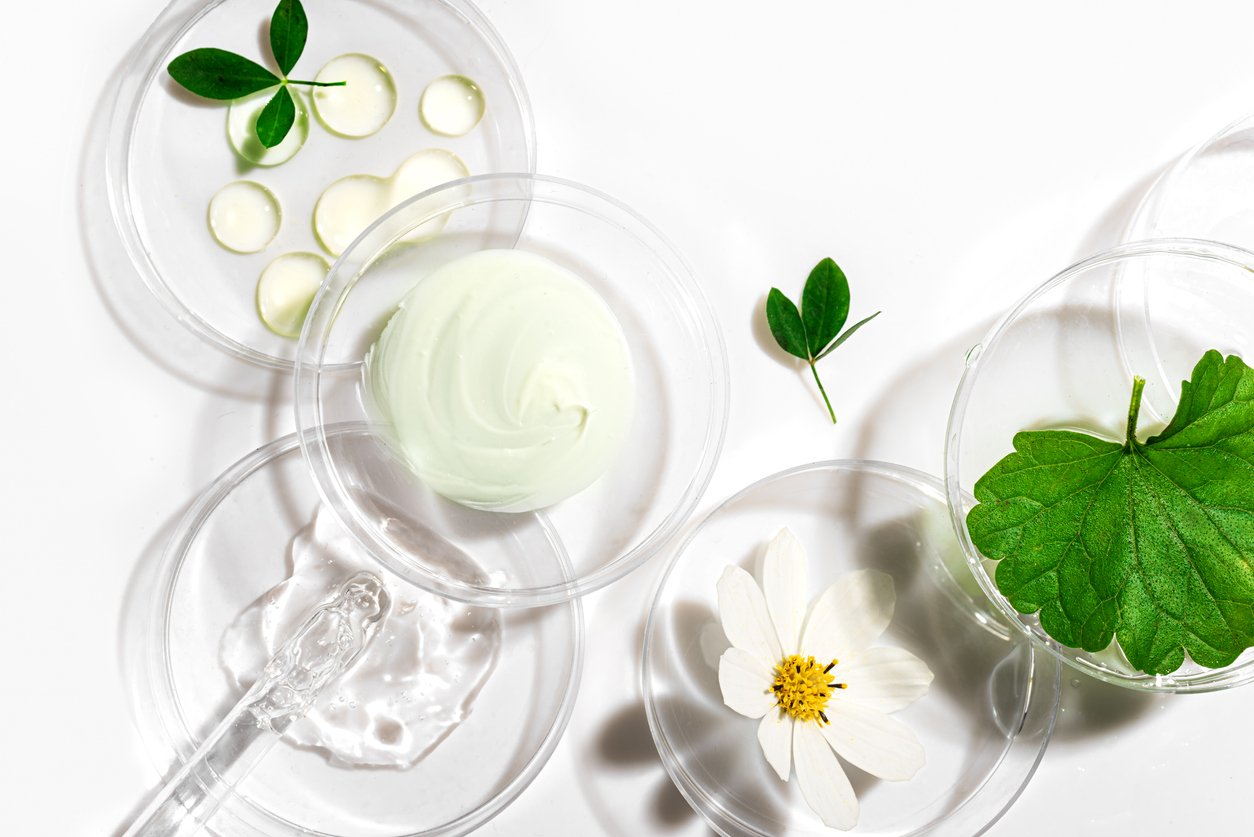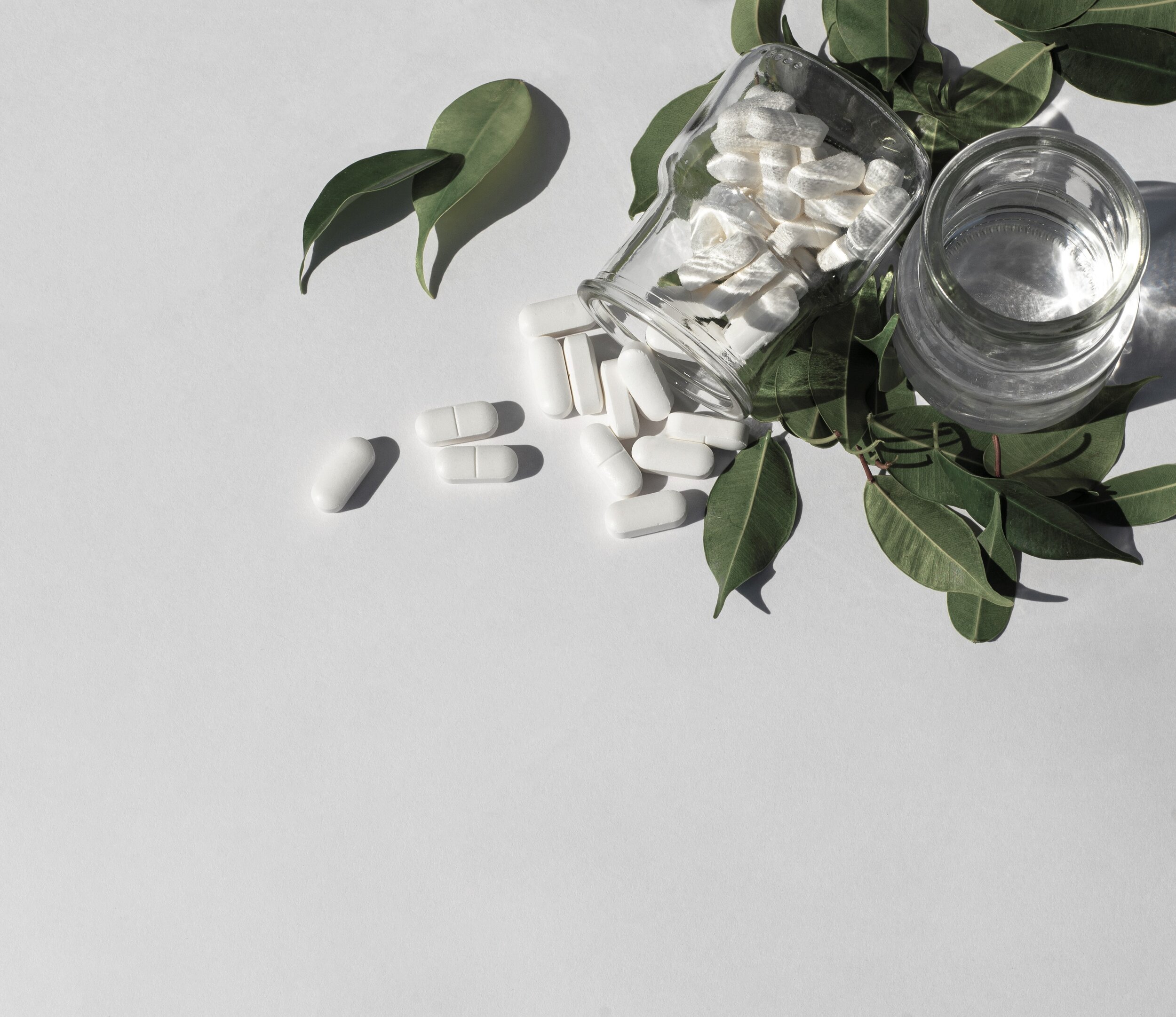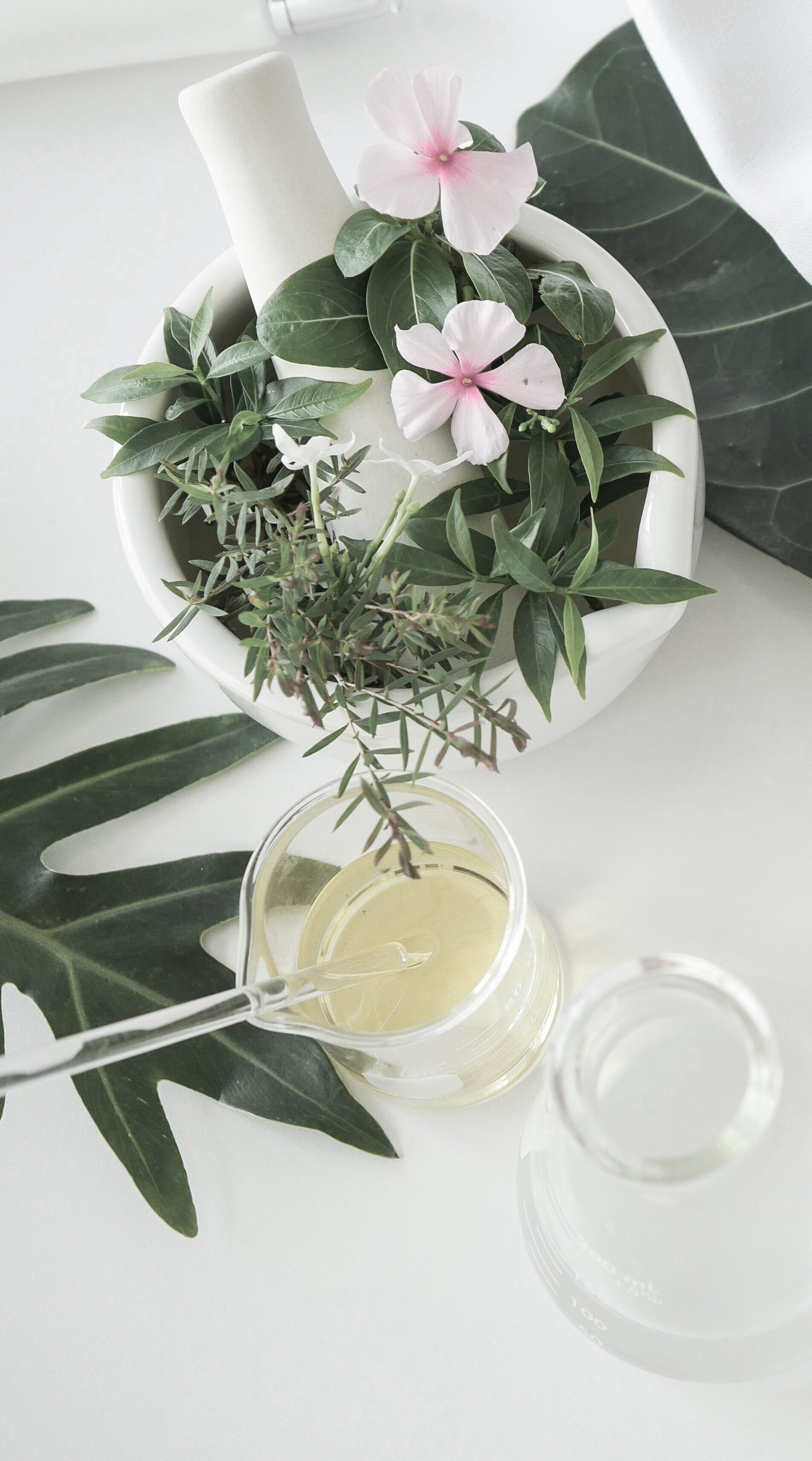Psoriasis
A chronic, immune-mediated, inflammatory skin condition that affects between 2-4% of the population. In about 10-15% of cases, psoriasis may progress from affecting the skin to affecting the nails and the joints.
It is generally accepted that there is an underlying genetic predisposition, comprising dominant and recessive genes with estimates suggesting that 35% of people with psoriasis have at least one family member with the condition. Psoriasis is an auto-immune skin disorder. When the genes for psoriasis are triggered, signals in the body’s immune system initiate an auto-immune response that leads to the production of an excessive number and growth of skin cells, (keratinocytes) and an infiltration of inflammatory cells into the dermis and epidermis of the skin. Once psoriasis is activated, the disease is usually chronic, with periods of waxing and waning. Whilst psoriasis cannot be cured, it can be controlled.
Causes:
There are four accepted Primary triggers that initiate psoriasis lesions:
Koebner Phenomenon - injury to the skin/nail from bites, cuts, operations, abrasions etc
Systemic Infections - viral or bacterial infections eg. Tonsillitis, Shingles etc
Stresses - Anxiety, worry, and other frustrations of life
Interaction with drugs - certain drugs such as lithium, anti-malarials, anti-inflammatory’s, some blood pressure medications (Beta Blockers) and antibiotics can trigger the initial presentation, either through commencement or cessation of the medication.
Secondary triggers - There are numerous secondary psoriasis triggers that may be involved in aggravating the condition, some of which apply to most sufferers while others only play a role in a select number of sufferers due to their genetic makeup.
The secondary triggers are related to issues such as diet, lifestyle, chemical exposure, environmental conditions, hormones, drugs, high alcohol intake, obesity and stress. Dietary factors and stress play a significant part in aggravating psoriatic lesions, due to their influence on biochemical and metabolic processes in the body that influence the inflammatory processes involved in psoriasis.
Types of Psoriasis
There are at least 10 psoriasis types and they all have different symptoms:
Plaque Psoriasis(Chronic Psoriasis Vulgaris) - affects over 90% of sufferers
Guttate Psoriasis - affects approximately 18% of sufferers
Flexural Psoriasis (Inverse Psoriasis, Genital Psoriasis)
Psoriasis Annularis
Pustular Psoriasis - affects approximately 1.7% of sufferers
Palmo-Plantar Psoriasis (Hand Psoriasis, Foot Psoriasis)
Erythrodermic Psoriasis
Scalp Psoriasis (Hair Psoriasis)
Nail Psoriasis (Psoriatic Nails, Psoriasis Nails, Fungal Nails)
Psoriatic Arthritis (Psoriasis Arthritis) - affects up to 30% of sufferers
Psoriatic Arthritis
Can affect between 10%-30% of people with psoriasis and is more frequent in patients with psoriatic nails or pustular psoriasis.
Characteristic symptoms include joint pain with or without swelling, stiffness, throbbing, redness of joints and heat within the joints, swelling with 'sausage-like' appearance of the fingers and toes, tenderness of joints and the surrounding tissue, morning stiffness, reduced movement and functioning. Eye pain and redness, similar to those symptoms of conjuctivitis, may also be present.
In 85% of patients who suffer from psoriatic arthritis, their skin symptoms preceded the joint disease on average by about 10 years. Most patients typically develop psoriatic arthritis between the ages of 30-50 years.
Although, as yet, there is no definitive medical test to determine psoriatic arthritis, other forms of arthritis, e.g. rheumatoid arthritis, have to be tested for in a process of elimination. Blood tests, MRI's and X-rays of the joints are typical diagnostic tests conducted to determine the type of arthritis involved.
There are five different types of Psoriatic Arthritis:
Distal arthritis - involving the small joints of the hands and feet, especially of the toes and fingers.
Oligoathritis - involving less than five larger joints.
Polyathritis - where more than five joints are involved and often presents with a similar appearance to rheumatoid arthritis.
Arthritis mutilans - a very destructive form of the disease that may cause permanent damage to the joints.
Spondylarthropathy - involving inflammation of the spine and hip joints.
Not all patients present with all of the symptoms, however it is vital to seek diagnosis and treatment from a GP or rheumatologist if you are experiencing:
morning stiffness that lasts for two hours or more,
swelling accompanied by heat within the joints and redness of the joints,
persistent pain even after taking aspirin.
Our approach to the management of psoriasis is focused on identifying the triggers that both initiated and continue to drive the inflammatory response associated with this condition.
Dietary assessment to determine the presence of any pro-inflammatory foods that may be aggravating the condition and correspondingly, nutritional recommendations to support a balanced and healthy diet, will be discussed.
The prescribing of targeted, evidence-based nutritional and natural medicines to address individual factors, to support sustained improvement and optimise skin healing.
Application of topical ointments and creams that are prepared at the time of consultation to address individual skin care needs.
For people suffering with psoriatic arthritis, musculoskeletal care, home exercise advice and soft tissue therapy may be recommended to alleviate some of the associated muscular tightness and movement restriction associated with the condition.
Eczema and Dermatitis
This is a group of skin conditions that may present at any age and has no known cure. Eczema affects about 18% of school-aged children and about 8% of the adult population although research indicates that a proportion of these children grow out of their condition by the time they reach their mid teens. Research suggests that the cause of eczema stems from immunologic mechanisms that include cell-mediated and IgE-Mediated immune responses. Contact irritants, contact allergens, infection, trauma, genetics, environmental factors and skin hypersensitivity are some of the causes of eczema. Eczema is often associated with asthma, seasonal allergies and food allergies.
Common forms of eczema/dermatitis that we treat include atopic eczema, seborrheic dermatitis, irritant contact dermatitis, peri-oral dermatitis, peri-orbital dermatitis and discoid eczema.

The severity of the condition can vary. In mild forms the skin is dry, hot, flaky and itchy, whilst in more severe forms the skin can become broken, raw and bleeding and vulnerable to infection. Although it can sometimes look unpleasant, eczema is not contagious. Eczema can wax and wane depending on a wide range of factors and during stable periods, the skin is still sensitive to flare ups. When triggers are identified, be they environmental, chemical or dietary, it is prudent to minimise exposure to triggering factors to reduce the potential for an eczema flare.
Atopic Eczema is the most common form of eczema and there is a genetic predisposition to this form. In other forms of eczema such as irritant contact dermatitis and allergic contact dermatitis, exposure to certain chemicals such as detergents and disinfectants or other allergenic agents such as wool, nickel, cosmetic and sunscreen ingredients, pet dander, pollens, moulds, foods, bacterial, viral and fungal infections and yeast growths initiates the condition. Further, environmental factors such as extremes in temperature, humidity and dry weather, stress and perspiration can also play a role. Sub-categories of eczema include allergic contact dermatitis, atopic eczema, peri-oral and peri-orbital dermatitis, irritant contact dermatitis, pompholyx eczema, seborrheic dermatitis and nummular dermatitis.
There are three different 'stages' of eczema.
The infantile form. This usually begins about six or eight weeks after birth. The itching is often intense and lasts up to until about the age of two years. The rash, which almost always affects the cheeks and the mouth, usually temporarily worsens after immunisation and during the teething phase. During the second year of life, the itchy areas develop over the hands, wrists and outer portions of the arms and legs.
The childhood type. While the infantile form in over half the cases resolves between the ages of two and four, it may persist and develop into childhood eczema. The areas that most affected are the creases in the elbow and the bends of the knees. The affected areas are dryer, the skin becomes thicker and greyish in colour, the itching becomes fierce and the sufferers become restless, anxious and hyperactive.
The adolescent and adult types. The infantile and childhood eczemas often resolve after a few years only to reappear in late adolescence. The itching may be intense and is usually worse at night. The areas affected are the creases of the elbows and knees, the face, the shoulders, and the upper back. The itchy and scratched skin thickens and becomes leathery in appearance. The skin usually becomes darker than the surrounding skin and may also develop dry scales. Adult eczema may resolve by the age of 30 or for some sufferers, it may persist throughout their entire lifetime. Seborrhoeic dermatitis is a form of eczema, usually developing between the ages of 20 to 40 years and more common in males. Most studies suggest a yeast over growth as a causative factor.
The role of diet in the management of eczema
There has been a great deal of research and discussion over the years in regards to the role of diet to eczema management. There are many foods which are believed to result in intolerances and allergies. In addition, certain foods are high in vaso-active compounds that, when regularly consumed, may trigger and aggravate pro-inflammatory mediators such as histamine, thereby increasing the itchiness of the skin. Consultation with a dietician or nutritionist to determine potential food triggers and to provide a sustainable, effective and practical diet plan, is recommended.
Eczema and dermatitis can be successfully managed and controlled through the application of creams and ointments, targeted nutritional and botanical medicines that support skin healing, modulate the immune response and moderate the inflammatory process and the avoidance of dietary, lifestyle and environmental triggers.
Please note: If you are suffering from severe, extensive eczema or dermatitis, are currently taking oral steroid medication to control your skin condition and are experiencing an acute flare, seek medical assistance through your GP or Dermatologist before making an appointment at this clinic. We do not treat infantile or childhood eczema (children under 12 years) at this clinic. In adults, our results with eczema treatment are better when commenced during a stable or more chronic phase of the condition.
Our approach to the treatment and management of eczema is focused on identifying the triggers that both initiated and continue to drive the inflammatory response associated with this condition.
Dietary assessment to determine the presence of any pro-inflammatory and/or vaso-active foods that may be aggravating the condition and correspondingly, nutritional recommendations to support a balanced and healthy diet, will be discussed.
The prescribing of targeted, evidence-based nutritional and natural medicines to address individual factors, to support sustained improvement and optimise skin healing.
We see a wide variation in preference of topical products with our eczema clients from clients who prefer lightweight, lotion formulations to those who like thick, occlusive -type topical preparations. At the time of your consultation, topical products will be prepared to nourish, soothe and support skin barrier repair.
Acne
Acne is an inflammatory skin condition which occurs primarily in early adolescence and young adulthood. Fluctuating hormone levels and bacteria, particularly the pathogen, Propionibacterium acnes, are factors affecting acne. Symptoms of acne include open-closed commedones, papules, pustules, nodules and cysts.

Some people, particularly women, develop acne for the first time in their late 20's or 30's. Severe acne tends to run in families and it presents more often in males. People who have abnormalities in circulating androgens and those who suffer from some endocrine disorders may also develop acne and some drugs can also either cause or make acne worse.
Acne begins when sebaceous glands secrete excess oil and flood the follicle. When the oil presses up close to the skin and hardens to form a plug this is called a “blackhead.” A blackhead, despite the name, is not caused by dirt, and poor hygiene by itself does not result in acne or blackheads. The black colour of the blackhead is the oil and skin debris accumulated at the opening the gland. Whiteheads are formed in similar manner, but the plug is much deeper under the skin.
Both blackheads and whiteheads disrupt the flow of sebum. Both can result in lesions that are bumps, nodules, cysts, or pustules. Whiteheads are keratin plugs, which close the gland opening. Blackheads are also keratin plugs in the gland opening but the gland remains open to the outside. Both whiteheads and blackheads may be present in people who suffer from acne.
There are many different types of acne, but there are three common types which are Acne Vulgaris ( the most common type and the one that troubles most young people ), Cystic Acne and Acne Rosacea. Acne Vulgaris is also then subdivided into 3 classes: Mild, Moderate and Severe Inflammatory Acne.
Mild inflammatory acne is caused when the area just under the plug becomes infected by an overabundance of white cell matter battling skin bacteria. The area becomes inflamed and reddened. There are two types of mild inflammatory acne, papules and pustules. Papules are reddened, inflamed acne while the pustules are reddened acne with a white collection of pus at the top.
Factors that exacerbate acne:
overproduction of sebum
bacterial growth
abnormal hair growth
environmental factors, such as humidity, drugs, and cosmetics
occlusion of the hair follicles by headbands, bra straps or chinstraps
emotional stress
Dietary factors
Although there is no cure for acne, there are numerous treatments for helping to prevent serious outbreaks. When treating acne, one should never try to squeeze the lesions as this can leave the skin open to infection which can lead to scarring.
Treatment for Acne involves:
Reducing the inflammation by avoiding rupture of the pustules
Limiting bacterial growth
Cleansing the affected areas twice daily with effective products to reduce the accumulation of debris and oils.
Topical application of effective anti-bacterial agents.
Avoiding application of oily or greasy creams and lotions to the affected area
Avoiding squeezing or picking at the acne as this may cause serious infections in those already inflamed follicles and slows the healing of active acne lesions.
Teenagers should reduce intake of stimulants and pro-inflammatory foods.
Develop a consistent cleansing routine - Use cleansing and healing topical products as prescribed by your health professional.
Prescription of appropriate nutritional and botanical medicines to support skin immunity.
Our approach to the treatment and management of acne is to identify any underlying factors such as poor skin immunity, lifestyle factors, nutritional deficiencies or hormonal imbalance that may be contributing to the condition. We have an extensive range of topical products formulated with effective natural extracts and active ingredients that we prescribe for acne.
Rosacea
From the Latin, 'Like roses' and commonly referred to as the 'Celtic curse'.
Rosacea is a chronic inflammatory disease of the face in which the skin becomes abnormally flushed. At times it can become pustular and weepy. The condition may affect both sexes in all age groups but it is more common in women in their middle or late middle ages. The cause is unknown, however, hereditary, environmental and infectious (Demodex face mite) factors are potential triggers.

It usually affects the hair follicles and their associated sebaceous glands involving most commonly the nose, cheeks, forehead and chin. Sometimes the neck and upper chest may be affected. It is accompanied by an increased reactivity of the capillaries causing temporary flushing (in the initial stages) and “permanent” erythema (redness) in later stages. Interspersed inflamed pinhead papules and pustules may also appear.
As the condition progresses, the erythema does not fade and permanent dilation of the capillaries results - (telangiectasia). Chronic and deep inflammation of the nose may occur, mainly in males, leading to rhinophyma (bulbous craggy swelling of the nose). Lymphoedema (swelling) around the eyes and the forehead may develop. When involvement of the eyes occurs the following symptoms may be experienced:
Mild conjunctivitis with soreness and lacrimation (overproduction of eye fluid-tears)
Blepharitis – inflammation of the eyelids
Inflammation of the cornea (keritis) and the sclera - the whites of the eyes (Scleritis) may occur.
Should the eyes be involved it is important for the patient to be referred to an Opthalmologist (Eye Specialist).
In rare cases Otophyma – cauliflower-like swelling of the earlobes and Gnathophyma- swelling of the chin - may occur.
The successful management of rosacea requires a considered approach to determine appropriate topical preparations that balance both the inflammation, reactivity and oil production that commonly present together; dietary modification to avoid secondary triggers in the diet and avoidance of nutritional, chemical and environmental factors that aggravate this condition.
References used in this section:
Lee JH, Son SW, Cho SH. A Comprehensive Review of the treatment of Atopic Eczema. Allergy Asthma Immunol Res. 2016 May; 8(3):181-190
Smith C, Barker JN. Psoriasis and its management. BMJ. 2006 Aug 19;333(7564):380-384.
Tirant M. Textbook and Atlas of Dermatology. 2018. Tree Life Media, India
Weinkle A, Doktor V, Emer J. Update on the management of Rosacea. Clinical, Cosmetic and Investigational Dermatology. 2015: 8;159-177.
Wolff K, Johnson RA. Colour Atlas & Synopsis of Clinical Dermatology. 5th Edition. 2005. McGraw Hill, USA.





